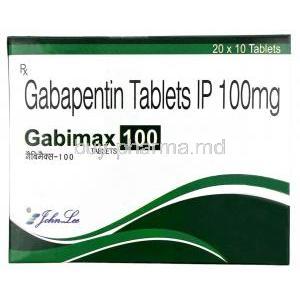Tribivet
- I. Introduction
- II. Composition of Tribivet
- III. Uses of Tribivet
- IV. Off-Label Use of Tribivet
- V. How Tribivet Works
- VI. Dosage and Administration
- VII. Side Effects of Tribivet
- VIII. Important Precautions
- IX. Special Considerations
- X. Careful Administration
- XI. Overdosage
- XII. Storage and Handling Precautions
- XIII. Interaction with Other Drugs
- XIV. Warnings and Contraindications
I. Introduction
Tribivet plays a role in veterinary medicine by providing effective treatment for various animal health issues. Its therapeutic benefits are well known making it an essential tool in caring for and helping different types of animals to recover and stay healthy. Its significance in the field of medicine is undeniable, as it plays a vital role in promoting the overall well-being of animals.
II. Composition of Tribivet
- Composition (per milliliter):
- Thiamine Hydrochloride (Vitamin B1): 50 mg
- Pyridoxine Hydrochloride (Vitamin B6): 50 mg
- Cyanocobalamin (Vitamin B12): 500 mcg 12.

III. Uses of Tribivet
Tribivet serves as an adjunct to antibiotic, anthelmintic, and flukicide administration. It is beneficial for conditions such as non-specific anorexia, liver distress, convalescence, debility, anemia, and during pregnancy and lactation. Additionally, it supports breeding bulls and stallions. This pregnancy-safe medicine aids in maintaining overall health and vitality in animals 1.
IV. Off-Label Use of Tribivet
- The discovery of ways to use Tribivet highlights its versatility and potential outside of typical applications.
- Real life examples and perspectives from animal healthcare experts showcase the ways Tribivet is being utilized to improve outcomes for animals.
- Exploring Unconventional Uses: Case Studies and Perspectives from Veterinarians
V. How Tribivet Works
The way Tribivet works showcases its influence on the well-being of animals. By acting on a level, Tribivet brings about significant and advantageous healing effects for the animals receiving treatment.
VI. Dosage and Administration
- For both dogs and cats:
- Dosage: Administer 0.5 to 2 ml of Tribivet injection.
- Route of administration: Either intramuscular (IM) or intravenous (IV) route.
- Duration: Typically given for 3 to 5 days12.

VII. Side Effects of Tribivet
Celebrated for its effects, Tribivet is well known. It's important to be aware of the side effects and take proactive steps to manage any adverse reactions, which can help safeguard the safety and health of animal patients. It's crucial to address any risks early on.
VIII. Important Precautions
Safety protocols and managing risks are fundamental aspects of overseeing the administration of Tribivet. It is crucial to grasp how Tribivet interacts with medications and to be aware of any contraindications in order to prevent negative consequences and uphold the effectiveness of Tribivet's therapeutic properties.
IX. Special Considerations
In the field of care, it's crucial to be cautious when giving treatments like Tribivet to specific groups such as older animals, expectant or nursing mothers, and young animals. Adapting the treatment approach for these groups can help reduce risks and improve treatment results.
A. Administration to Elderly Animals
- Changes in dosage may be necessary to account for the reduced metabolic functions commonly seen in patients.
- It's important to watch for any negative reactions since elderly individuals are more prone to adverse effects from medication.
B. Administration to Pregnant Women and Nursing Mothers
The safety of using Tribivet during pregnancy. Breastfeeding is crucial for veterinary professionals. They need to balance the advantages with potential drawbacks, following a cautious approach to protect the well-being of both the mother and her young ones. Decisions on whether to proceed with care or avoid giving the medication are guided by real-world evidence and professional judgment. Of concern is timing. Ensuring that drug administration aligns appropriately with the stage of pregnancy or lactation.
C. Administration to Children (Young Animals)
When it comes to animals their growing bodies bring about specific obstacles in medical treatment. It's important to adjust dosages based on factors like age, weight and overall health to prevent any harm. After giving medication it's crucial to monitor for any negative reactions. Seeking advice, from a veterinarian specializing in pediatric care is recommended.
X. Careful Administration
To make sure Tribivet is given safely, it's important to follow the recommended instructions for dosage how it's given and keep an eye on how it works and any possible side effects. Having guidelines helps prevent mistakes with the medication and keeps patients safe. Checking in regularly allows for changes to be made to the treatment plan when necessary.
XI. Overdosage
- Excessive use of Tribivet can lead to a range of outcomes requiring urgent attention from a veterinarian. It is crucial to be able to identify the signs of an overdose for effective treatment.
- The treatment plan may involve giving emetics, activated charcoal, or providing care based on how serious the situation is.
XII. Storage and Handling Precautions
It is crucial to store Tribivet to ensure its effectiveness and safety. Keep the medication dry, shielded from direct sunlight, and inaccessible to children and pets—guidelines for handling stress the significance of cleanliness and care to avoid contact.
XIII. Interaction with Other Drugs
XIV. Warnings and Contraindications
To guarantee patient safety, it is crucial to recognize alerts related to animals and comprehend the situations where Tribivet should not be administered. Instances of contraindications may involve sensitivity to any of the ingredients in the product or specific medical conditions that prohibit its usage. A comprehensive review of the patient's background and diagnostic assessments help in identifying potential contraindications, thereby mitigating risks.




















